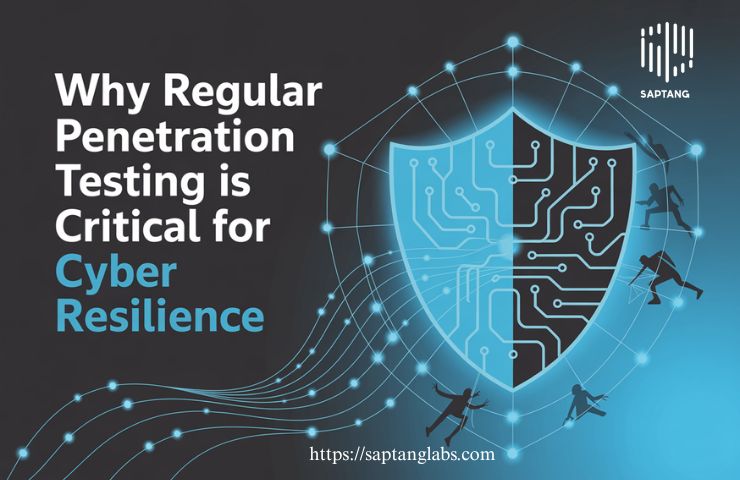
Cyber threats don’t knock before entering. They don’t wait for annual audits or compliance reviews. In today’s connected world, threats are constant, silent, and always evolving. That’s why cybersecurity can’t be a once-a-year checkbox exercise. It needs to be active, ongoing, and adaptive.
And at the heart of that mindset is one critical practice: regular penetration testing.
At its core, penetration testing (or “pentesting”) is a simulated cyberattack on systems, conducted by professionals — ethical hackers — who try to find and exploit vulnerabilities before real attackers do.
It’s not just scanning software. It’s human-led, strategic, and often uncovers issues that automated tools miss.
Think of it like hiring someone to try breaking into a building to see if the alarms, locks, and guards actually work — and more importantly, how they could be bypassed.
Many organizations treat pentesting as a one-time event — something to tick off during an audit or before a major launch. But systems change. So do threats. What was secure six months ago might not be secure today.
Here’s why a single test a year doesn’t suffice:
Cyber resilience isn’t just about preventing attacks. It’s about being able to withstand them, respond effectively, and recover quickly. And for that, visibility is key.
Regular penetration testing helps by:
In other words, it reveals where vulnerabilities exist — not just in theory, but under real-world conditions.
There’s no one-size-fits-all frequency. It depends on the industry, infrastructure, and risk tolerance. That said, some general practices include:
Some organizations even adopt continuous pentesting models, where internal teams or partners conduct targeted tests throughout the year on different parts of the environment.
Consider a real-world case — anonymized, but based on true events.
A large enterprise conducted a one-time pentest, identified some medium-risk issues, remediated them, and resumed business as usual. But six months later, after a routine software update, an old vulnerability reappeared — and this time, it was exploited.
The result? A six-week breach, leaked credentials, reputational damage, and a full-scale investigation.
Had a follow-up or quarterly test been in place, the reintroduced vulnerability would have been spotted — and the breach likely avoided.
These two terms often get confused.
Both are important — but only pentesting shows how vulnerabilities can be chained together, exploited in real life, and what the real-world impact could be.
Many organizations pentest just to meet compliance — PCI-DSS, ISO 27001, GDPR, etc. While that’s a good start, compliance is a minimum baseline, not a full guarantee of safety.
Attackers don’t care if an audit was passed. They care if they can get in. And they’re often faster and more creative than the checklists used in compliance reviews.
Cybersecurity is often seen as a cost center. But regular pentesting can actually save money and reputation in the long run.
A high-quality penetration test isn’t just a technical document. It should deliver:
It’s important to ensure that any provider’s process aligns with organizational goals and operational realities.
Not all pentesters are created equal. When selecting a partner or building an internal red team, look for:
At Saptang Labs, extensive experience with high-stakes environments informs a human-led, intelligence-driven approach tailored to mission-critical operations.
Cyber resilience is about readiness, not reaction. Regular penetration testing helps organizations stay one step ahead — not just of attackers, but of internal assumptions.
Security isn’t a static goal. It’s a moving target. And regular, strategic pentesting is one of the most effective ways to keep aiming in the right direction.
You may also find this helpful: The Rising Threat of Ransomware How to Stay Protected